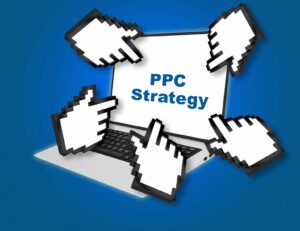When it comes to marketing, you can always do better. With Google search results getting ever more ad-focused, now is the time to look at your PPC strategy. Is it as effective as it could be?
Below, we’ll walk through some of the small changes you can make today that will give you the edge on your competition.
Tweak your ad copy
“Do what you’ve always done, and you’ll have what you’ve always had.”
It’s a good phrase to bear in mind when it comes to ad copy!
Don’t be afraid to make changes to your ad copy based on feedback.
Ad copy can be difficult to pin down. It might take many iterations to find the exact phrase that leads to the most conversions. You should adjust your ad copy periodically, learning from what you’ve done previously.
Conversely, don’t change your copy constantly. The trick here is to get a large enough data set that you can make informed decisions.
You’ll soon see patterns start to emerge that can lead you toward tweaks. Do certain phrases lead to better conversions with certain demographics? What effect does geography have?
These large-scale questions will start to guide you toward the most efficient ad copy.
You’ll also find that ad copy changes over time. Changes in your target industry or even news headlines can lead to a shift in language that you’ll need to adjust to.
Deploy negative keywords
Ads with poor contextual placement don’t do any good for anyone. For you, ads directed at a disinterested audience are wasted money. For the audience, they don’t present anything of interest.
Negative keywords can be a great way to skip the frustrations of poor ad placement.
A negative keyword such as “men”, for example, could save a massive amount of poor ad placements on websites targeted towards women.
This is particularly useful where terms might double up. Ads regarding glazing services, for example, will want to avoid being associated with Microsoft Windows. In this case, negating words such as “computer”, “Microsoft”, or “PC” could go a long way toward boosting conversions.
Your search terms report should be able to show you these misaimed searches. This makes it a great starting point from which to build your negative keywords list.
Have a suitable landing page
There’s no quicker way to stop a conversion from turning into a sale than an irrelevant landing page.
If a landing page doesn’t match the needs or expectations of the audience, you’re not going to make a sale. At best, it’s wasted money. At worst, it’s going to result in lower quality scores and ad rank all around.
Your landing page should look like a legit endpoint for the ad in question. The content should be tailored around what your audience is expecting and wanting to see when they click your ad.
Take note of that last point! That’s not necessarily the same as the thing you want them to see. View your landing page as a customer would see it and make changes as appropriate.
It’s a tricky balancing act because you’ll still want the landing page to serve your business needs. You’ll need the page to serve the end-to-end purpose of giving your customer a pitch, and keeping them on the page to convert their click to a sale.
SKAG it
What’s a SKAG? We’re talking about single keyword ad groups.
Some people might have twenty to thirty ad words in a group. That might seem like a fairly tight group, but single keyword ad groups can give your PPC strategy an edge on your competitors using groups of this size.
The trick to single keyword ad groups is they allow a one-to-one match between the keyword, ad, and landing page. This drives up sales made from conversions and ultimately means greater returns for you.
Luckily, you don’t have to do this for all of your keywords. Choose your big heavy-hitters, maybe five of them, and apply it only to those.
As this creates a closer match between the user search term and your chosen keyword, it helps to drive up your metrics, including ad quality score.
Target your campaigns
Once your ads have been running for a while, you can start to build a picture of what your audience looks like.
This is a great time to take a step back and analyze the trends. If you have better responses to certain keywords based on demographics such as geographical location, you can work to target your ads even further.
Eventually, you may feel comfortable focusing your ads to certain zip codes or excluding regions you don’t make consistent sales from. Obviously, this is particularly useful if your service is specific to a locality in some way.
By targeting your PPC strategy in this way, you can save on wasted money and drive up successful sales.
Timing is…everything
Well, maybe not everything, but deploying your ads at certain times of the day can make a surprising amount of difference to your PPC strategy.
Like locality, timed ads narrow down clicks to more closely suit your targeted demographic.
In this way, you’re less likely to get irrelevant clicks and more likely to turn conversions into sales.
Think about who you’re targeting and when they’re likely to browse. If they’re 9-to-5ers, for instance, then running your ad in the mid morning or mid afternoon will be a waste of time. Go for evenings or even lunch times, however, and you’ll likely see a lot more success.
You can also apply these patterns across the week. For the 9-to-5ers we mentioned, they’re likely to spend a lot of time on the internet during their off days on the weekends.
Be wary of broad match keywords
Broad match keywords are less restrictive than specific keyword phrases.
However, they run the risk of attracting irrelevant traffic and derailing your PPC strategy.
In theory, you can offset this with smart use of negative keywords, but you’ll never pin down every combination of keywords that users may search. The only way to keep on top of these would be to play Whack-A-Mole with your results, adding negative keywords as certain searches appear.
Drawing in traffic unintentionally through broad matches will cost you money and drive down your quality ratings. Although it can be deployed sensibly, you should only use it with caution.
Don’t apply broad match to all of your keywords by default. Consider it carefully in each circumstance so you can choose to deploy it only when you really need it.
Deter unwanted clicks
It may sound a little self-defeating, but sometimes you’ll want to deter certain clicks.
As we’ve discussed, irrelevant clicks cost you money without any real return. If you spot a trend with a certain keyword bringing in clicks you don’t want, you can use your ad copy to help shape the audience.
Do your goods or services start at a particular price? Are they gender specific? Are they relevant to married individuals, or retirees? These are just a few examples, but by including these narrowing elements in your copy, you can ensure conversions are relevant to your targeted audience.
Shape your PPC strategy in this way, and what little you sacrifice in CTR will be more than made up for by the effectiveness of your campaign.
The clarion call to action
Alright, it’s a basic piece of advice. But in all the admin of setting up a PPC strategy, it can be easy to overlook the small things.
Choosing a clear call to action will significantly boost your returns from your ads. Without a clear call to action, users on your landing page will fumble around before eventually drifting out again.
The call to action should be punchy and simple. Don’t try to get creative here – common use terms are your friend. “Order Now”, “Get a Quote”, or “Buy Now” are all examples of effective calls to action.
These are succinct and easily understood. They should occupy a very visible place on your landing page, perhaps in a color scheme that makes them stand out further.
Little and often – adjusting your PPC strategy
We’ve briefly touched on this, but at the heart of a good PPC strategy is the ability to make small changes.
You don’t need or want to make sweeping changes constantly. Doing so only confuses your analyses. Think of yourself as a scientist, changing only one variable at a time so you can run a fair test.
By making small changes here and there and analyzing the results, you’ll start to see an upward trend in your sales.
This snowball effect can be enough to turn an unsuccessful PPC strategy into a winning one.
Many businesses don’t revisit their ad campaigns to make changes. Others try to change too much at once and tie themselves in knots. By being the one with the initiative to make small, smart changes, you can easily muscle out the competition.
So you can see that an effective PPC campaign to boost your ROI doesn’t need to be intimidating. Patience and a willingness to make changes may be all you need to start seeing real results.
We can help you with your strategy for paid ads with our PPC services.
Be sure to follow our blog for more tips on how to take your marketing to the next level!


